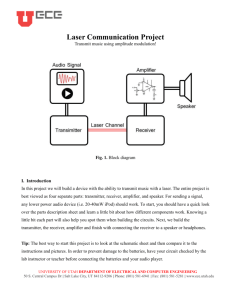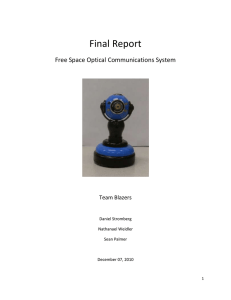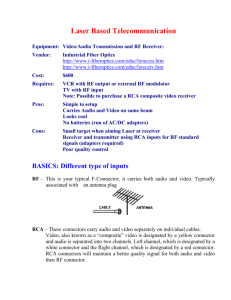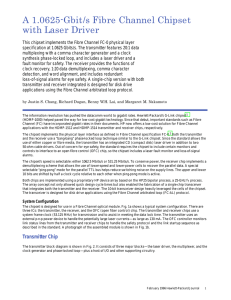communication with laser beam
advertisement
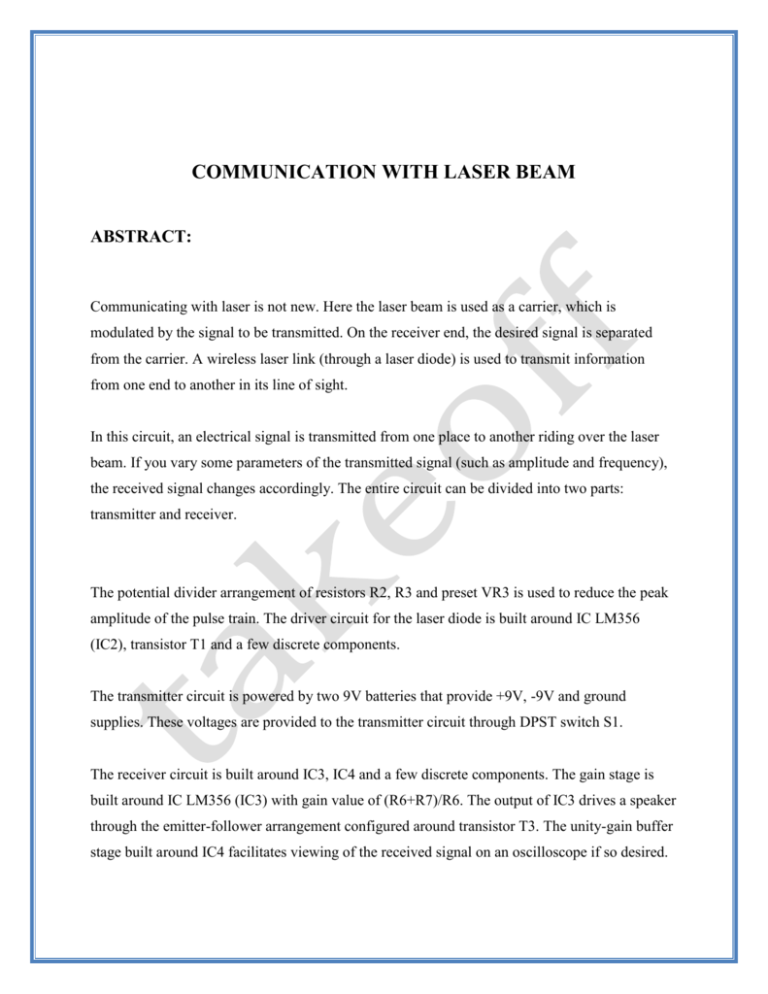
COMMUNICATION WITH LASER BEAM ABSTRACT: Communicating with laser is not new. Here the laser beam is used as a carrier, which is modulated by the signal to be transmitted. On the receiver end, the desired signal is separated from the carrier. A wireless laser link (through a laser diode) is used to transmit information from one end to another in its line of sight. In this circuit, an electrical signal is transmitted from one place to another riding over the laser beam. If you vary some parameters of the transmitted signal (such as amplitude and frequency), the received signal changes accordingly. The entire circuit can be divided into two parts: transmitter and receiver. The potential divider arrangement of resistors R2, R3 and preset VR3 is used to reduce the peak amplitude of the pulse train. The driver circuit for the laser diode is built around IC LM356 (IC2), transistor T1 and a few discrete components. The transmitter circuit is powered by two 9V batteries that provide +9V, -9V and ground supplies. These voltages are provided to the transmitter circuit through DPST switch S1. The receiver circuit is built around IC3, IC4 and a few discrete components. The gain stage is built around IC LM356 (IC3) with gain value of (R6+R7)/R6. The output of IC3 drives a speaker through the emitter-follower arrangement configured around transistor T3. The unity-gain buffer stage built around IC4 facilitates viewing of the received signal on an oscilloscope if so desired. The receiver circuit too is powered by two 9V batteries that provide +9V, -9V and ground supplies. These voltages are provided to the receiver circuit through DPST switch S2. Working of the circuit is simple. Align the transmitter and the receiver so that the laser light directly falls on the phototransistor. The speaker connected between the emitter of T3 and ground beeps to indicate that laser communication is taking place. You can change the pitch of the audio beep by changing the frequency of the transmitted signal through presets VR1 and VR2 in the transmitter. Assemble the transmitter and receiver circuits on separate general-purpose PCBs. Now adjust presets VR1 and VR2 to get approximately 1kHz pulse signal at pin 3 of IC1. Adjust preset VR3 to ensure that the desired current flows through the laser diode during the transmission. BLOCK DIAGRAM: At transmission section: AUDIO PHOTO LASER AMPLIFIR TRANSIS PREAMPLIFIER TOR MICRO PHONE At receiver section: LASER PRE- SENSOR AMPLIFIER AMPLIFIER DRIVER LASER ADVANTAGES: It communicates also for a long distance. Low cost. Easy to drive. High performance. APPLICATIONS: Broad casting systems. At laboratories. Railway stations.







